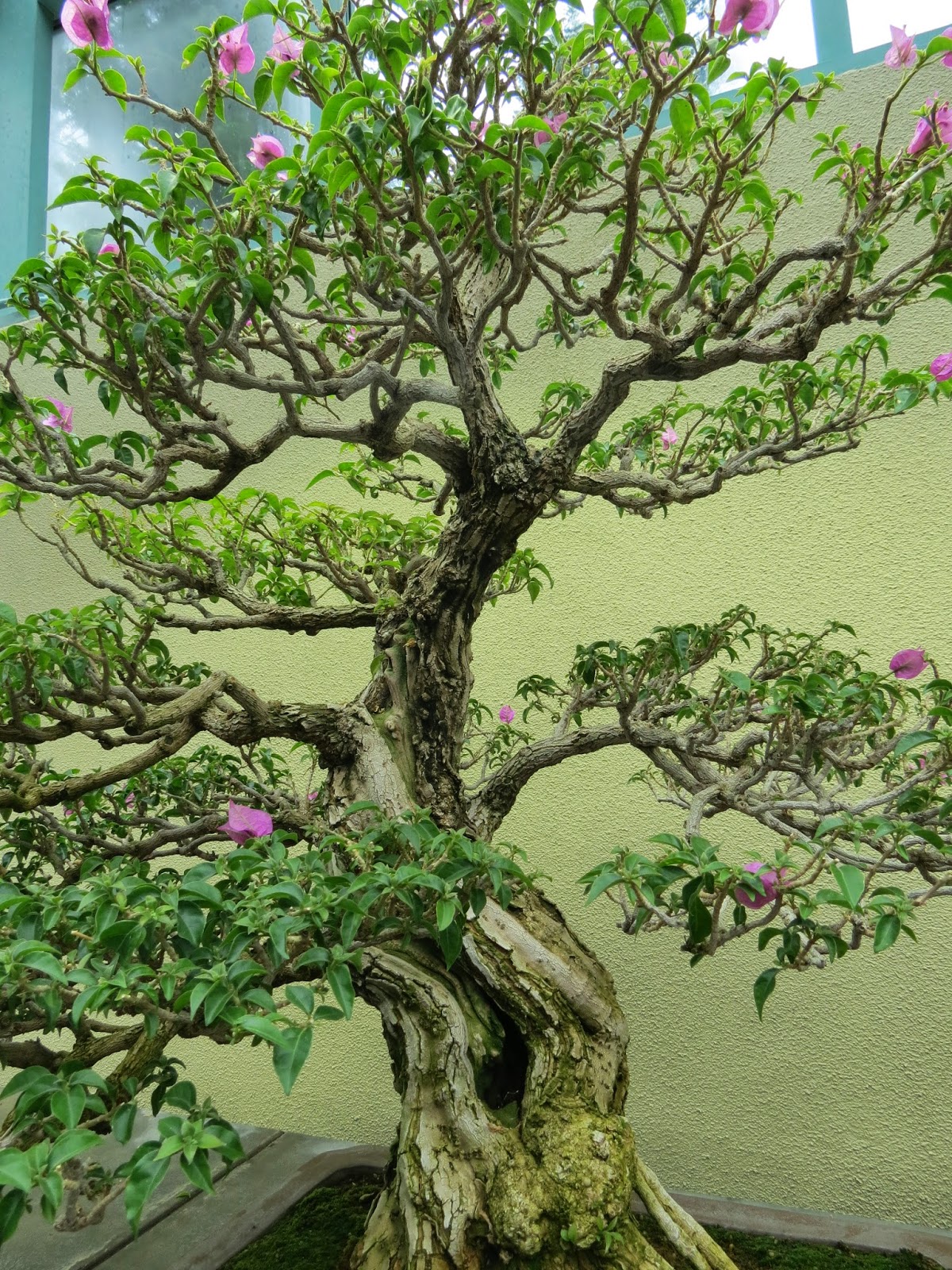Last Sunday, we drove up to Federal Way to visit the Rhododendron Species Botanic Garden. I'm still sorting through pictures of the rhodies, trying to pair them down to a reasonable number for a blog post, but in the meantime, I'll show you some pictures of he Pacific Rim Bonsai Collection. No visit to the Rhododendron Species Garden is complete without seeing this beautiful collection of living artwork.
The Pacific Rim Bonsai Collection only recently re-opened after several years of closure due to lack of funding. Now that it's open again, I encourage everyone to take advantage of this wonderful resource.
One small lesson and then I'll let the pictures do most of the talking. It's a bit of a pet peeve of mine when people mispronounce the word "bonsai." I don't know why. I have no Japanese ancestry. I'm just picky, I guess. Usually I hear people say "bon" as in James Bond or bonbons, and "sai" with a "z" instead of an "s." The correct pronunciation of bonsai is more like "bone-sigh". The way most people pronounce it sounds more like banzai, which is a Japanese cheer or war cry. Not really the same thing, O.K.?
Anyway, enough of my annoying nitpicking. Enjoy!
 |
| A small conservatory houses several tender bonsai, such as this magnificent bougainvillea. Many vines and shrubs make wonderful bonsai, and they don't have to be tender species, either. |
 |
| I like big trunks and I cannot lie. |
 |
| Some of these trees have especially interesting histories. This mountain hemlock was collected in 1986 from the Mt. St. Helens area, making it a local! |
 |
| This Tucker oak has a hollow trunk. |
 |
| In places, the living tissue supporting the crown is less than an inch wide. |
 |
| The dead wood flakes in paper-thin layers, giving this oak a weathered, battered appearance that adds to the illusion of age. |
 |
| This tree, trained in the cascade style, is a golden Atlas cedar, much less common than the blue form. It is especially unique in that this tree started out with an upright trunk. The artist bent the trunk down by drilling a hole where he wanted the apex of the bend. This increases flexibility at that point, allowing a relatively large trunk to be bent drastically. As the trunk is bent, the sides of the hole squeeze together and the hole eventually disappears with barely a trace. |
 |
| This is not only a Korean yew, it's a Korean bonsai as well (pronounced "boonjay" in Korea). I didn't know this, but the art of bonsai made its way to Korea before crossing the sea to Japan. It makes sense now that I think about it, since bonsai originated with the Chinese art of penjing. |
 |
| The base is hollowed and stripped of bark to add a weathered appearance. The wires in the back are being used to pull the branch down, so that it resembles more a branch on a full-sized, mature tree. |
 |
| This juniper has two strips of bark moving up the main trunk in a helical fashion. |
 |
| Everyone has room for a blue Atlas cedar. If not a full-sized model, how about a compact? |
 |
| This Juniperus occidentalis, or Sierra juniper, has beautiful blue foliage contrasting with the large area of dead, bleached wood at the base. Living tissue at the back of the trunk supports the branches above. |
 |
| Ah, one of the multicolored Satsuki azaleas. Not all Satsukis have this feature, but when they do they can be spectacular. |
 |
| This cultivar has dark pink, lighter pink, white, and individual flowers streaked with multiple colors. |
And this is where I'll leave you for now. Enjoy this odd azalea with its marvelous multicolored flowers and beautiful branch structure.






















Not my thing as such but I do admire the discipline and work that goes with it, and the beautiful results!
ReplyDeleteIt does require a commitment that most people understandably prefer not to make. But that just makes collections like this all the more valuable. All the viewing enjoyment and none of the work!
DeleteI echo what Mark & Gaz had to say...and interesting to learn about the hole drilling.
ReplyDeleteI was pretty surprised to learn about that technique myself. I knew about wiring and weighting branches, but drilling a hole clear through the trunk rather shocked me.
DeleteThis collection is the larges in the U.S. I believe and it's wonderful that it's now open to the public again. Weyerhauser has gone through a lot of changes in the last 10 years. Thanks for sharing your images and reminding me of the great treasure in my own back yard!
ReplyDeleteI think the collection at the U.S. National Arboretum may be slightly larger, but this is a close second. I'm jealous of all the things in your backyard. I have to drive quite a ways to see them.
DeleteI was at the exhibit just a month ago. I adore these trees and appreciate the artistry that goes into cultivate them. I love miniatures anyway and these trees just take it to a whole other level. And thanks for the lesson in pronunciation. If I'm going to say bonsai, I'd rather say it correctly, as to not be thought of as a war monger...
ReplyDelete